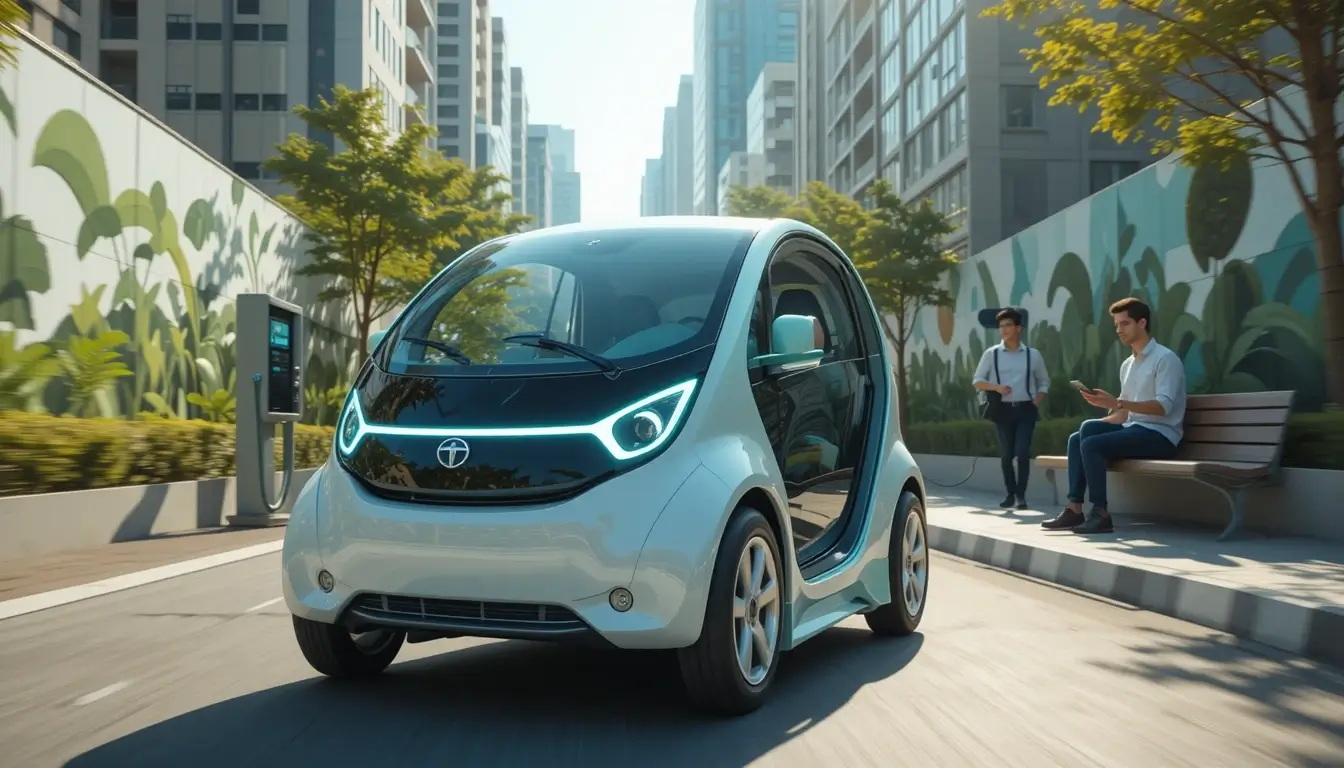Remember the Tata Nano? That tiny, budget-friendly car that promised to put millions of Indians on wheels? Yeah, the one that sparked debates about affordability vs. practicality. Fast-forward to today, and Tata’s back with a plot twist: the Tata Nano 2025.
And this time? It’s electric, packed with tech, and ready to silence the skeptics. Let’s talk about why this reboot might just be the urban mobility hero we’ve been waiting for—flaws, quirks, and all.
From “Cheapest Car” to “Smartest EV in Town”: A Redemption Story
Let’s be honest—the original New Tata Nano 2025 had its issues. Critics called it cramped, underpowered, and, well, too basic. But here’s the thing: Tata wasn’t wrong about the vision. They just jumped the gun.
Today, electric vehicles running through the urban streets and the atmosphere filled with polluted air is a clear sign of Tata’s mic-drop moment of Nano 2025.
Can you think of the Nano 2025 as replacing the old gasoline engine with an electric motor that runs as silently as a whisper, adding solar panels and giving it a design that doesn’t look like a cheap car? That’s the Nano 2025. It feels like a person whom you never thought could achieve anything waking up one day and winning MasterChef.
Design: Small but Mighty (and Surprisingly Stylish)
Gone’s the boxy, no-nonsense look. The 2025 Nano sports a fresh, modern vibe—think rounded edges, a sleek LED light strip up front, and a two-tone paint job that somehow makes it look expensive.
Sure, it’s still compact enough to squeeze into motorcycle parking spots (we’ve all tried it), but the cabin? Way roomier. They’ve stretched the wheelbase just enough so your knees aren’t hugging the dashboard.
Inside, it’s all about “cheap but cheerful.” The seats? Recycled fabric that’s softer than you’d expect. The dashboard? A 10-inch touchscreen that’s basically a smartphone on wheels. And get this—they’ve added tiny storage nooks everywhere. Glovebox? Check. Door pockets? Check. A secret compartment under the passenger seat for your emergency samosas? Probably. It’s like IKEA designed a car.
Tech That’s Smarter Than Your Average Sedan
Okay, let’s geek out. The Tata Nano 2025 isn’t just electric—it’s smart electric. The base model promises 250 km on a charge, which, let’s face it, is more than enough for zipping around Mumbai or Delhi. But the real win? Tata’s thrown in 30-minute fast-charging. Yeah, you can juice it up while grabbing a coffee. No more panicking when your battery hits 10%.
And then there’s the tech. This thing’s got AI that learns your driving habits. Leave for work at 8 a.m. every day? The car pre-cools the cabin by 7:55. Hate traffic? The built-in navigation finds backroads even Google Maps ignores.
Oh, and it’ll nag you about tire pressure and brake pads like a worried parent. Safety-wise, they’ve loaded it with airbags, ABS, and lane-assist—because crashing a Nano shouldn’t be a death sentence anymore.
Eco-Friendly? Try Eco-Warrior
Here’s where the Nano 2025 gets cheeky. Tata’s gone full “green mode.” The roof has solar panels that trickle-charge the battery—park it in the sun, and you’ll gain a few free kilometers daily. The materials? Recycled plastics, plant-based foam, and carpets made from old fishing nets (yes, really). Even the production line runs on wind and solar power.
But the coolest bit? The battery recycling program. Once your battery’s toast, Tata takes it back, refurbishes it, and slaps it into a rickshaw or solar farm. It’s the circle of life, EV-style.
Who’s This For? (Spoiler: Probably You)
Let’s cut to the chase: the Tata Nano 2025 isn’t for everyone. But if you’re a city dweller tired of traffic jams and Rs. 100/liter petrol? This could be your jam. Students, young professionals, gig workers—it’s perfect for anyone who needs a no-fuss ride that won’t bankrupt them. Rumor is Tata’s pricing it under ₹8 lakh, which undercuts every EV in India. Even Ola and Uber might snag these for their fleets.
And hey, if you’re still nervous about EVs? Tata’s rolling out subscription plans. Pay monthly, swap batteries easily, and ditch the commitment phobia.
Learning From Mistakes: Why This Tata Nano 2025 Won’t Flop
Tata’s not repeating history. The 2025 Nano’s built on a tougher platform—no more flimsy sheet metal jokes. They’ve partnered with charging startups to blanket cities with stations, and there’s a PR blitz teaching folks why EVs aren’t just “fancy golf carts.” Plus, that 5-star safety rating? It’s a flex aimed squarely at past critics.
The Bigger Picture: Why This Matters
Globally, cities are banning gas cars. India’s pushing hard for EVs. But let’s be real—most people can’t afford a ₹20 lakh Tesla. The Nano 2025 bridges that gap. It’s not just a car; it’s a middle finger to pollution and a high-five to affordability. If this works, we could see millions of these little guys zipping around, cutting emissions, and proving you don’t need a fortune to join the EV revolution.
Wrapping Up: Don’t Sleep on This New Nano 2025
The Tata Nano 2025 isn’t perfect. The trunk’s still tiny, and highway drives might feel… adventurous. But for what it is—a city-friendly, planet-loving, wallet-pleasing EV—it’s a home run. Tata’s taken a punchline and turned it into a pioneer. And honestly? We’re here for it.
So keep your eyes peeled. The New Nano 2025 might just be the underdog that changes how India drives—and hey, maybe the world, too.
